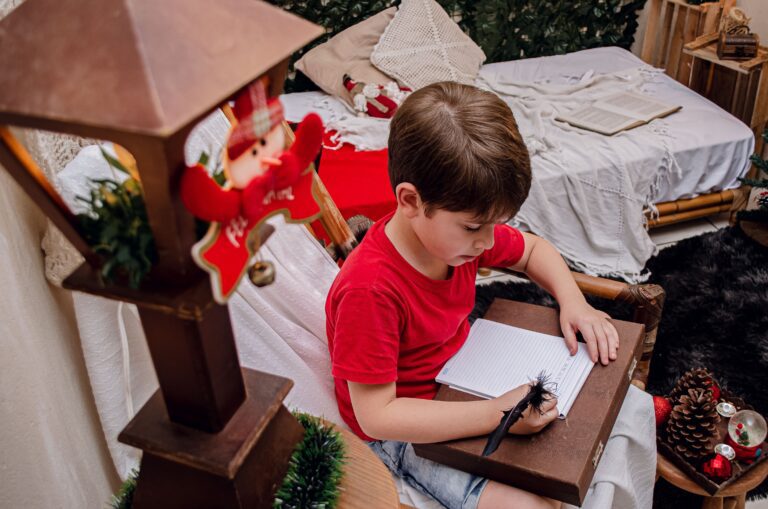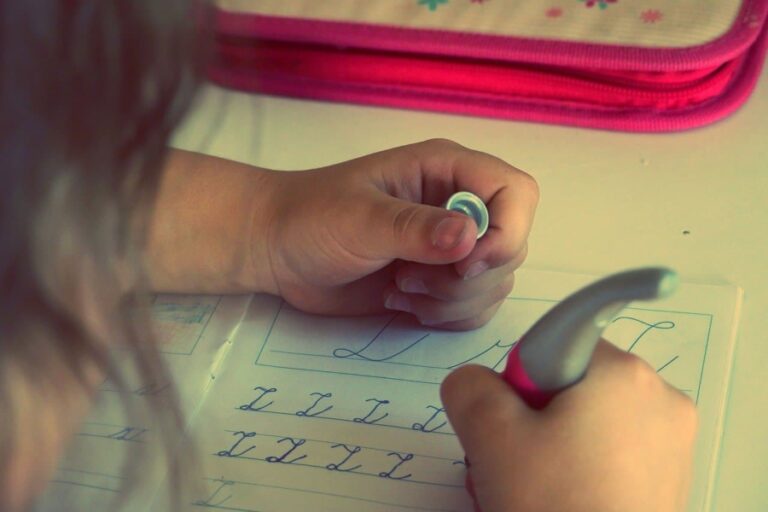5 Easter Writing Ideas For Children

Celebrating Easter with our children can be such a precious time. For those of us who follow Jesus, it’s a wonderful opportunity to ponder the incredible gift of Jesus’ death and resurrection and all that it means for us. We can invite our children to celebrate with us in a wide variety of ways. Here are 5 Easter writing ideas for children that can help them reflect on the meaning of this holy holiday.
Meaningful Copywork Ideas
Accurately copying good models of writing is a powerful tool for growing writing skills. (If you are new to copywork, read more about it here.) At Easter, why not use Scripture excerpts from the Easter story or beautiful quotes about Easter? My children enjoy singing Easter hymns and songs. Beautiful song lyrics also make great copywork passages. Some of our favorites are “Christ the Lord is Risen Today“, “Christ Arose“, and “The Power of the Cross“. Break longer passages into smaller chunks so children can do just a little each day.
Make this activity more meaningful by decorating their work and displaying it in your home. Another option is to write these words on notecards or nice stationery and give them to people as little Easter gifts. NotebookingPages.com offers free Easter-themed pages that can help with this.
If you’re hosting an Easter meal, the children could make a name card for each guest, adding an Easter Scripture verse or quote to each one.
Journal or Diary Entries from a Different Perspective
One way to help our children experience the Easter story in a fresh way is to see it through the eyes of their imagination. Have them take the role of a character in the story, perhaps Peter or Mary Magdalene, or the Roman centurion who supervised the crucifixion, or even one of the soldiers who was tasked with guarding the tomb. Pick a point in the story, either before or after the resurrection, and imagine what the person would have written in their journal or diary that day.
You could discuss this together beforehand to generate ideas. To get more insights, choose more than one character and brainstorm what they may have been thinking and feeling. Then pick one to write about. Write together if this feels easier for your children. This process of imagining another perspective may give your children a new appreciation for the familiar Easter story.
You and your children may also like to write your own personal journal entries as a response to thank God for all that Jesus did for us through His death and resurrection.
Poems
Your children might enjoy writing an Easter poem. You could even do this together. Read some Easter poems for inspiration. One option would be to write an acrostic poem based on the word EASTER or RISEN or JESUS or RESURRECTION. Another would be to write a free verse poem as a response to an Easter theme like hope or forgiveness or new life.
If you’ve done some imagining from another character’s perspective as described above, your child might like to write a poem from the perspective of Peter or Mary, or one of the angels who announced the resurrection, or another character who was deeply impacted by Good Friday and Easter Sunday.
Stories
A story can be as simple as a straightforward retelling of the Easter story after hearing it read from one of the Gospel accounts. Or again, the children could be encouraged to write from a different perspective, picking up from any point in the story that captures their attention. Perhaps Peter recounts the story starting from his boasting during the Last Supper. Or maybe Thomas tells the story from the moment he arrives to hear the other disciples exclaiming that Jesus is indeed alive.
For a wonderful taste of how to do this and how powerful it can be, listen to some of the 12 Voices of Easter by Woodrow Kroll.
Or maybe your child would like to write a story about someone hearing the Easter story for the first time. Would this be set in modern times or sometime in the past? In what country does the story take place? Who is telling the story? Maybe a grandparent to a child or a child to another child? How does the person respond?
Offer as much support as needed for your child to be successful. Feel free to brainstorm ideas and make notes for your children. Think about which scenes to include. What sights, sounds, smells, and other vivid details would make the story come alive? Even just writing a scene or two can grow their writing skills while providing fresh insights.
Newspaper article or news interview
What would have been reported in an imagined Jerusalem Times newspaper the day after Jesus’ death? What about the days after his resurrection? You could brainstorm some headlines together and then use the inverted pyramid format to answer the 5 W questions in the first few sentences, adding details to the report as you go. Include some imagined quotes from eyewitnesses for extra impact.
Another option is to imagine a news interview with an eyewitness. What interview questions might a reporter have asked? And how would the person have answered? What would they ask the Roman centurion who supervised the crucifixion? Or what how would they question Mary Magdalene or Pilate or one of the disciples? What answers do they think these people would have given?
If your children choose the interview format, they might like to act it out with you or a sibling. Perhaps they would even want to video the interview. Would they enjoy dressing up for this? What would they call the news station?
Conclusion
Has one or more of these Easter writing ideas for children inspired you? I hope you and your family will have some good conversations around the themes of Easter. If the chats lead to grabbing a pen and doing some writing, that’s even better. However, be assured that even a good discussion helps build thinking and composition skills. I also hope your interactions will add some meaningful engagement around the incredible story of Easter.
Some links are affiliate links. Thank you for your support!






